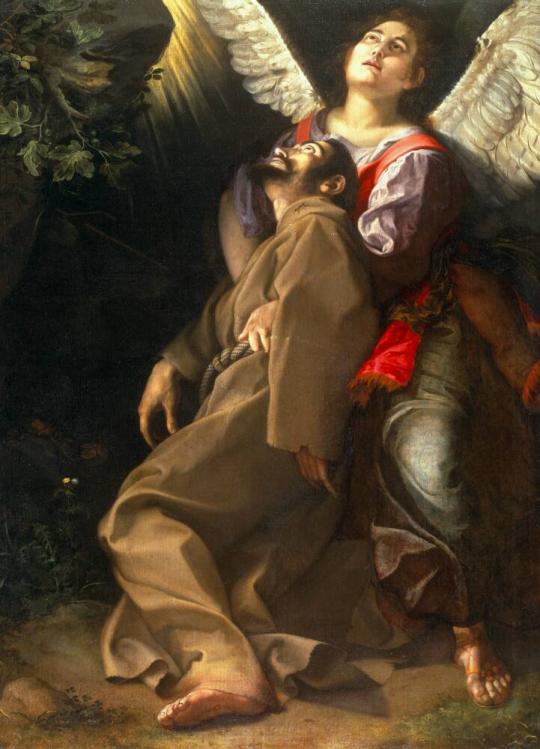Ecstasy of Saint Francis by Orazio Gentileschi 1601
Ecstasy of Saint Francis of Assisi, by Orazio Gentileschi (1600–1601). Oil on canvas
This monumental painting depicts the moment immediately after Saint Francis received the stigmata (wounds of Christ) in his hand, feet, and side. Supported by an angel, the medieval saint looks upward toward a divine light as tears stream down his face.
Despite the presence of the angel, supernatural elements are suppressed: the vision of Christ that induced the stigmata appears only as a glow in the upper left of the painting. The substantial figures, naturalism, and dramatic treatment of light in this painting reflect Orazio Gentileschi’s encounter with the work of Caravaggio, whose first public commission was unveiled in Rome in 1600.
Although Gentileschi was greatly influenced by Caravaggio’s style, the exquisite lavender, pink, scarlet, and blue-green of the angel’s clothing reveal lingering elements of Mannerism in Gentileschi’s work.
The substantial figures, naturalism, and dramatic treatment of light in this painting reflect Gentileschi’s encounter with the work of Caravaggio. Like Caravaggio before him and Valdés Leal after, Gentileschi brought the figures close to the picture plane, causing the viewer to sense their palpable presence and to participate in Francis’s experience.
He also included several touches that heighten the realism of the supernatural subject: the carefully rendered vegetation in the upper and lower left; the way the angel grips Francis’s rope belt, struggling to hold him up; and two studio props—the swan wings used for the angel and the monk’s habit—known to have been owned by Gentileschi, which he lent to Caravaggio.





Comments
Post a Comment